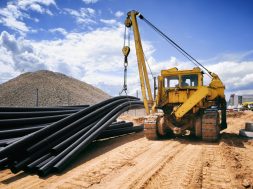Domestic mining and construction equipment industry report

According to ICRA, the domestic MCE industry would see a fall in volume in FY2025 after two years of robust growth—26 percent in FY2023 and 24 percent in FY2024e.
Since the Model Code of Conduct will be in effect during the April–May 2024 parliamentary elections (until the results are announced on June 4, 2024) and will continue to be so, the growth trend will reverse in Q4 FY2024 and Q1 FY2025. Additionally, it is anticipated that in FY2025, operating margins will drop by 100–150 basis points and the combined sales of the enterprises in ICRA’s sample set will decline by 9–12 percent.
Providing more insights, Ritu Goswami, Sector Head, Corporate Ratings, ICRA, says, “Pre-election push on project execution by the Government created strong demand momentum for the MCE industry in the last two years. However, with a likely disruption in project award activity for two consecutive quarters (Q4 FY2024 and Q1 FY2025e) amidst the Parliamentary Elections and monsoon-related impact on construction activities in Q2, H1 FY2025e is expected to see a moderation in sales. While the volumes will ramp up in H2, given the pick-up in new project awards starting Q3 and partly supported by pre-buying due to the CEV-V emission norm transition in January 2025 (deferred from April 2024), ICRA expects FY2025 to see a 12–15 percent YoY decline (which translates into volumes of 1.14–1.18 lakh units). A similar trend was seen during the previous election periods (FY2015 and FY2020) as well, with YoY volumes contracting in these years.”
While the near-term domestic MCE demand environment remains challenging, the industry’s long-term prospects remain intact, given the continued Government focus on infrastructure development (as reiterated in the interim budget for FY2024–25). “Increasing mining targets for coal and iron-ore (to reduce import dependency and meet the needs of the growing economy) also bode well for MCE demand from the domestic market, which accounts for 90 percent of the volumes sold by the domestic OEMs,” added Ms Goswami.
Financially speaking, ICRA’s sample set companies’ aggregate revenues and operating margins are predicted to decrease by 9–12 percent and 100–150 basis points, respectively, in FY2025 due to the forecast reduction in volumes. The cost structure is anticipated to be supported by relatively constant commodity prices; nevertheless, given the strong reliance on imports and the ongoing Red Sea Crisis, any increase in logistical costs and/or supply chain interruptions constitute a downside risk to estimates. ICRA anticipates that strong order books and an emphasis on execution from EPC players would encourage the use of equipment and maintain steady rental yields year over year.
“The OEMs based out of India (ICRA sample) are expected to incur a capex of ₹ 1,400-1,500 crore during FY2025 towards debottlenecking, product development initiatives (e.g. CEV-V compliant equipment, alternative fuel-driven powertrains, etc) and localisation initiatives; however, the overall capex outlay is likely to remain modest for most industry participants in the medium term. While operating margins are expected to moderate due to under-absorption of the fixed cost, ICRA expects the credit profile of industry participants to remain stable in FY2025, in the backdrop of low leverage and comfortable liquidity of most industry participants.” Ms. Goswami added.
Cookie Consent
We use cookies to personalize your experience. By continuing to visit this website you agree to our Terms & Conditions, Privacy Policy and Cookie Policy.






